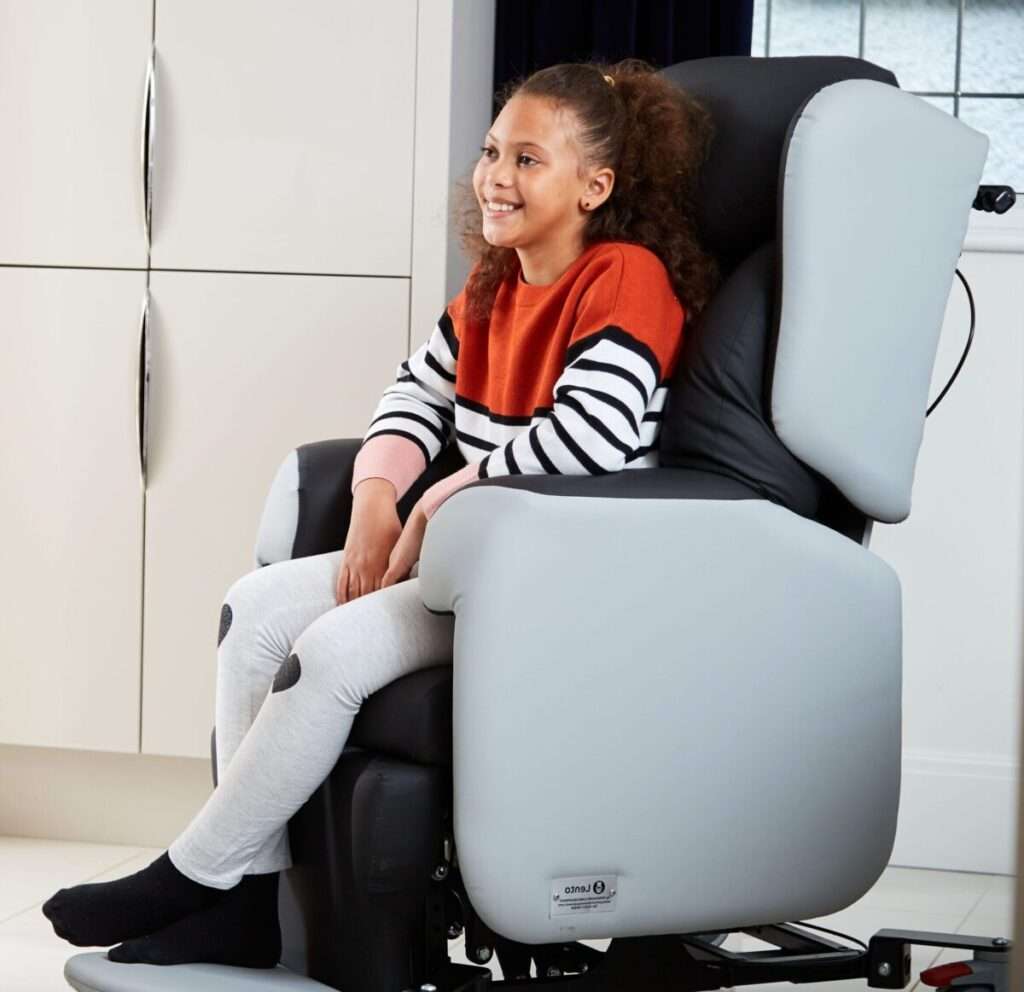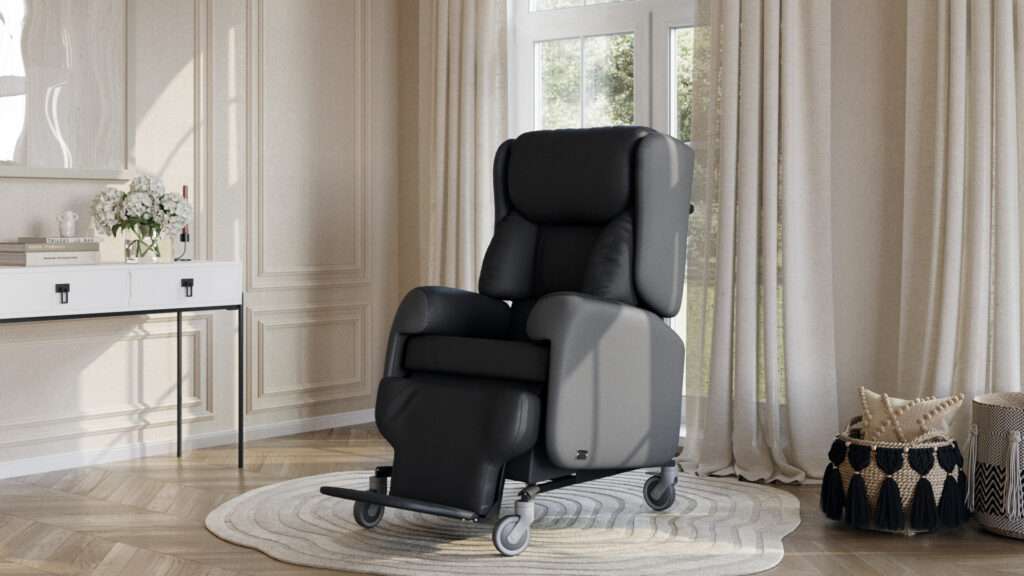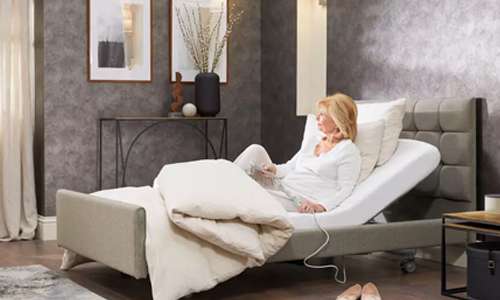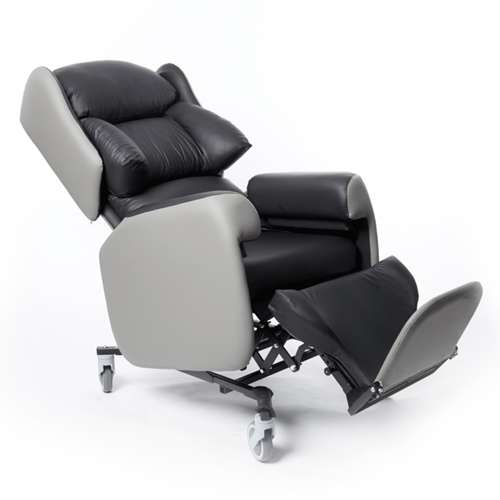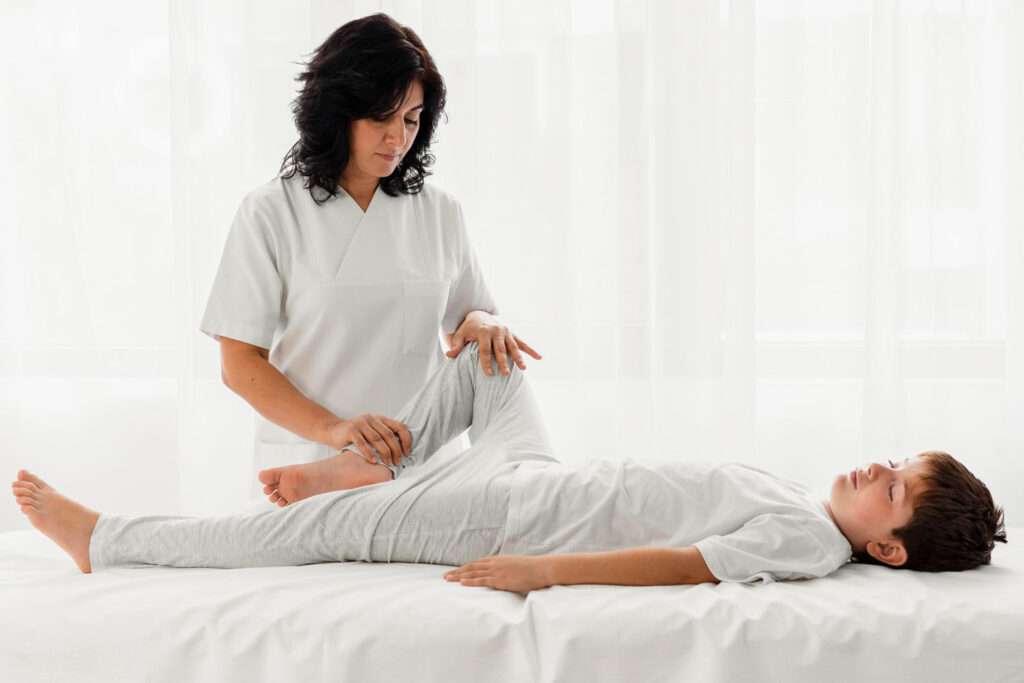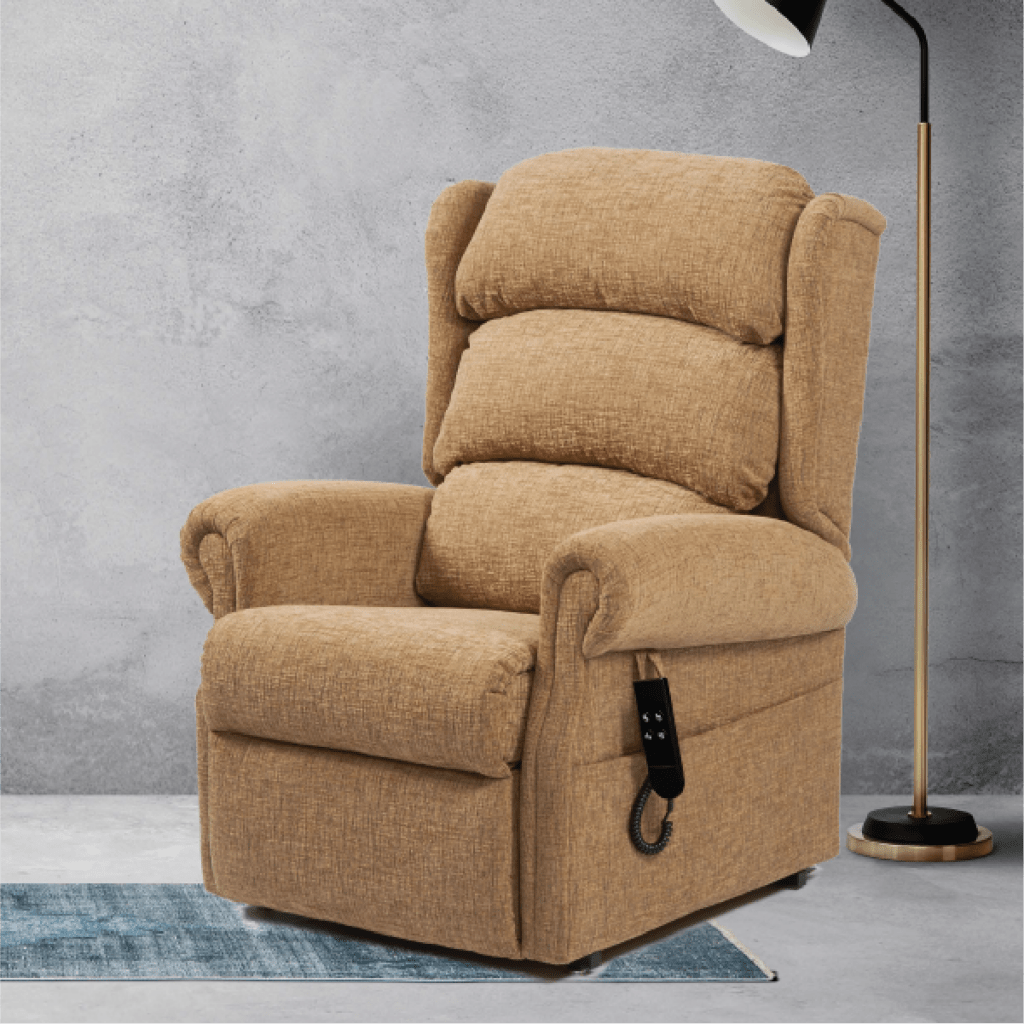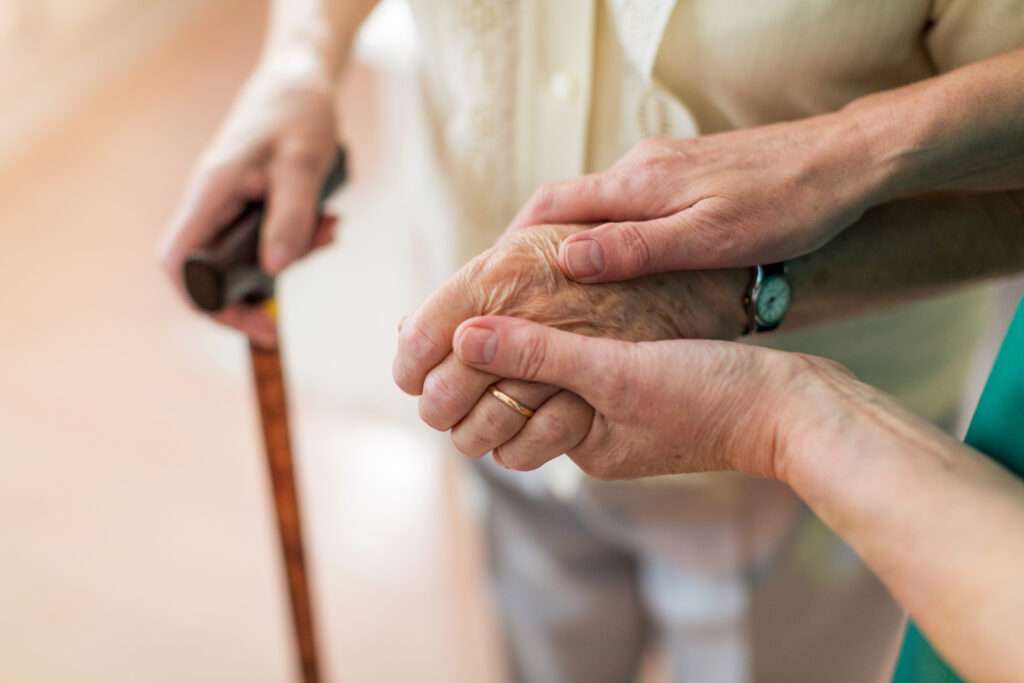Children in care need specific types of beds as well as seating, to help them get quality sleep and assist their recovery if they are in intensive care.
Our work with children’s hospitals such as GOSH (Great Ormond Street Hospital) has brought us into the realm of paediatric care, and we would like to share our experience in finding suitable beds for children and adolescents.
Jump straight to...
Types of Paediatric Beds
A paediatric bed is specially designed for the care of children and adolescents in healthcare settings, such as hospitals and clinics. Under this broad heading, there are some key distinctions we would like to point out to clarify the different types available.
Standard Paediatric Bed
Standard paediatric beds cover the main requirements for a childcare bed, with strong safety features such as height adjustment and side rails, adjustable head & footboard sections, and child-friendly colours and designs.
The height adjustment helps carers access the child at the right height, and assists with transferring them on and off the bed.
Colourful and themed designs, like Captain Marvel or Disney, make the child feel at home and reduce overall stress levels. Or how about inbuilt sound systems and screens? Specialist children’s hospitals like GOSH theme the child’s room and give them digital access to their favourite movies and games, to give them the best care experience possible.
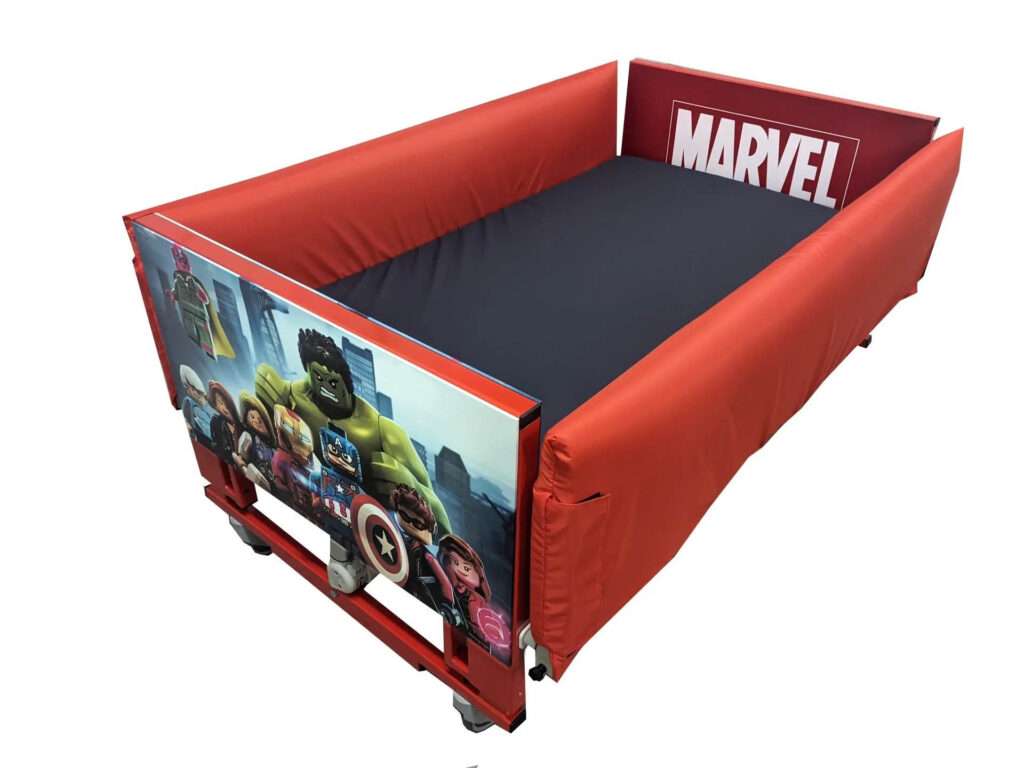
Carribean Turning Bed – Marvel themed
Crib-Style Paediatric Bed
These are designed to ensure maximum patient safety with higher sides, creating a more enclosed, ‘crib’ style environment. For young infants and toddlers this creates a calmer, more reassuring environment. The mattress is normally height-adjustable to enable carer-to-patient access, and they often have mesh sides so the child can interact with people around them as well as feeling safe.
Paediatric Intensive Care Unit Bed (PICU)
The clue being in the name, these are built specifically for use in hospital intensive care units (ICUs). The Paediatric ICU area in a hospital provides close monitoring and 24hr care for critically ill children and adolescents.
Advanced features on these beds include vital signs monitoring equipment, weigh scales, IV pole and pump holders, and they are designed to accommodate medical procedures like CPR.
Transportable Paediatric Bed
Smaller and lightweight, these are designed for easy movement between hospital wards or healthcare facilities. This is particularly useful if the child is moved around the hospital for different procedures e.g. tests or infusion therapy.
Side rails and harnesses are important features to protect the child during transit. These beds are made from durable materials that are robust and easy to clean.
Examples of Different Paediatric Beds
The following list is a randomised selection of paediatric beds available on the UK market. They are diverse enough to illustrate the different types of beds covered above, and show the pros and cons of each.
As standard, all beds meet the medical bed standards for children (BN EN 50637), covered in more detail in this article.
Lisclare Junior Bed (Standard Paediatric)
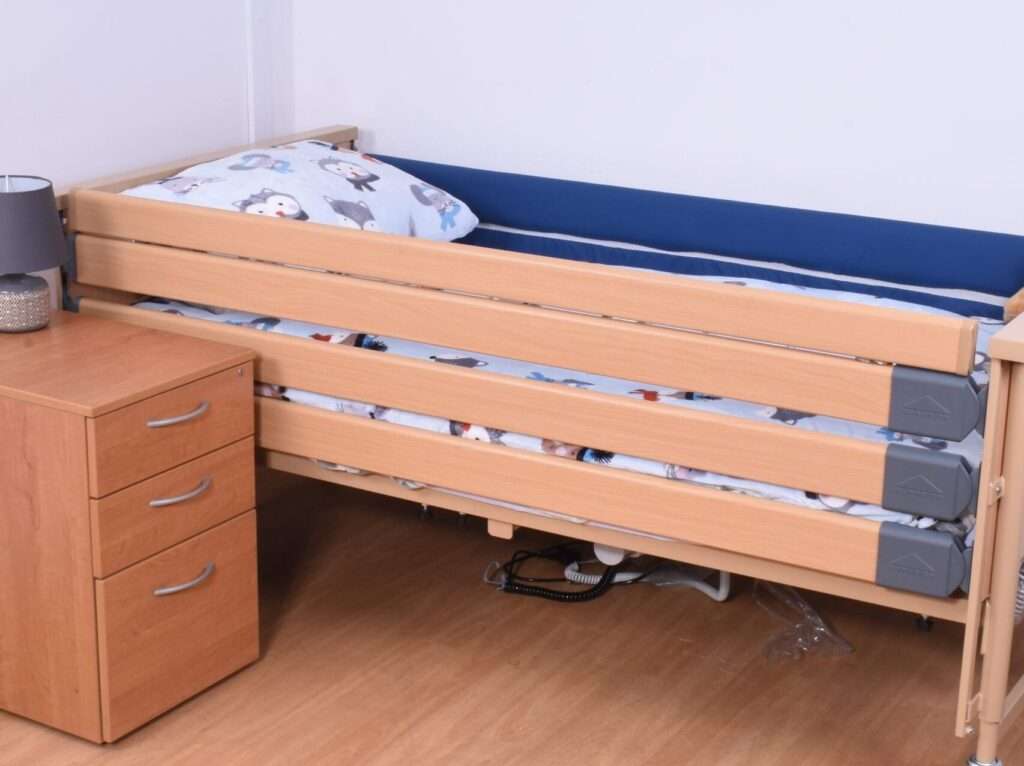
Lisclare Junior Bed
| Pros | Cons |
|
|
|
|
|
CubCare Paediatric Bed (PICU)
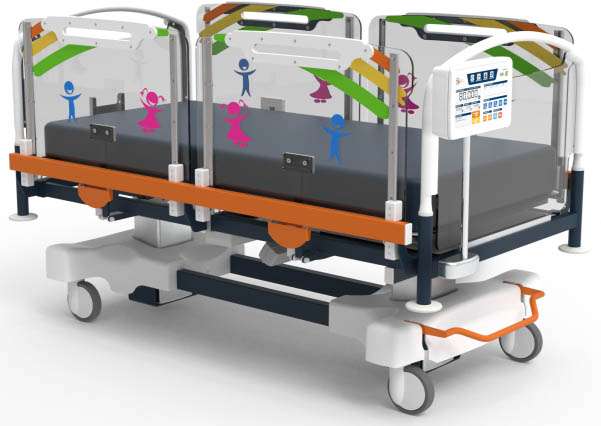
CubCare Paediatric Bed
| Pros | Cons |
|
|
|
|
|
|
|
|
|
Kinderkey Junior Care Bed (Transportable Paediatric)
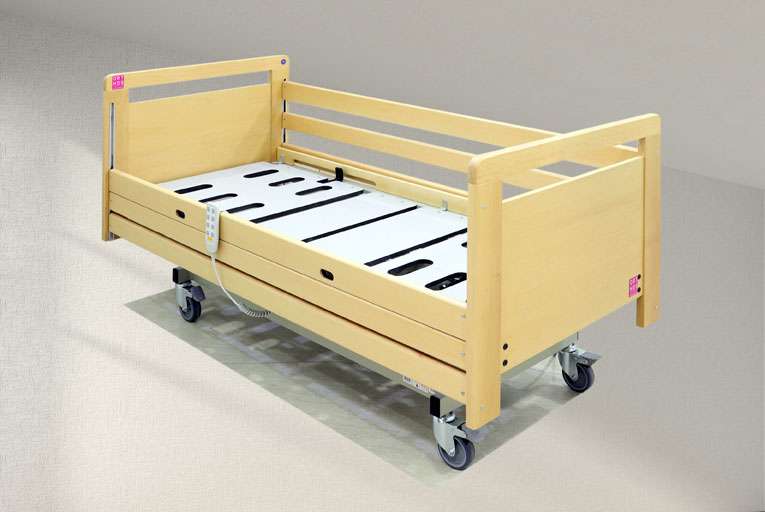
Kinderkey Junior Care Bed
| Pros | Cons |
|
|
|
|
|
Accora JuniorBed (Standard Paediatric)
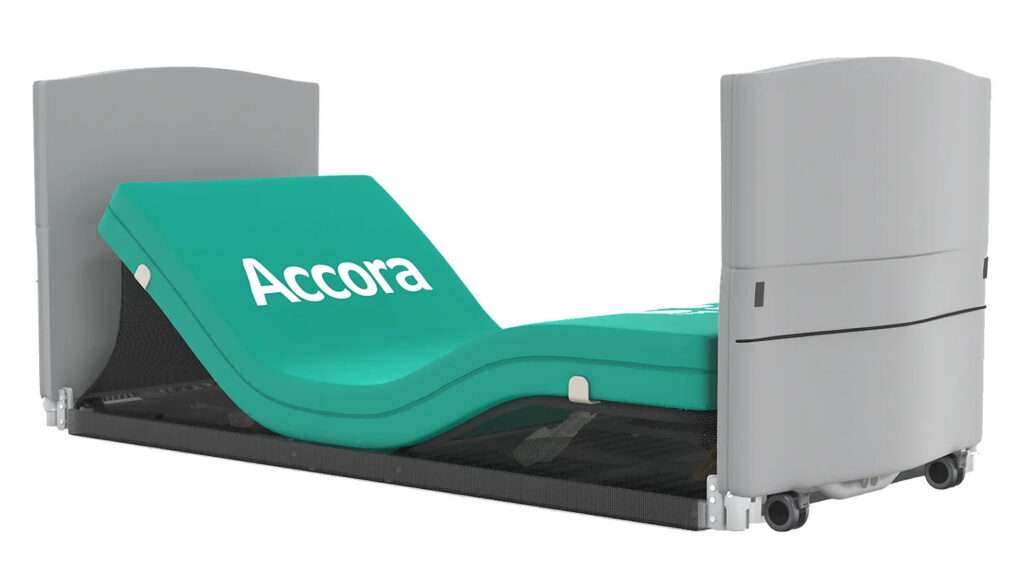
Accora JuniorBed
| Pros | Cons |
|
|
|
|
|
|
|
Linet Tom 2 (Crib-Style Paediatric)
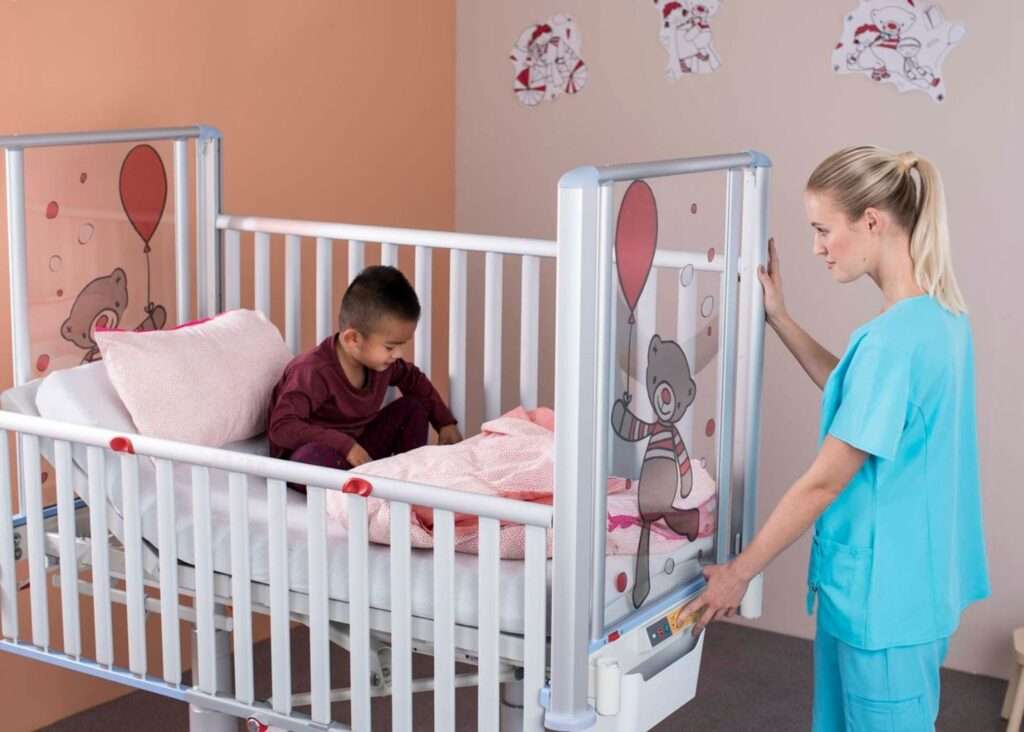
Linet Tom 2 Bed
| Pros | Cons |
|
|
|
|
|
|
|
|
|
What Type of Paediatric Bed Do I Need?
The Linet Tom 2 is ideal for small infants as it is enclosed, with extra safety features, making it a good option for PICU environments.
Small infants 0-5 years are generally well catered for, but there is a lack of suitably sized beds in the 5-15 year bracket. This is where the CubCare fits perfectly, with dynamic length adjustment to suit children within this age range, with average heights of 100-170cm.
Conclusion
Standard paediatric beds are versatile, but may lack specialised features that are crucial for care of children with specific medical conditions in intensive care environments.
As standard, all beds should comply with the medical bed standards for children, BS EN 50637, to ensure patient safety.
When purchasing paediatric beds, close attention should be paid to the adjustability of the bed so it can be used for a wider age range, such as the CubCare bed, which adjusts from 160 to 200cm long.
For more advice or to arrange a demonstration of our CubCare bed, please contact our Acute Sales Team.
Speak to our team today







